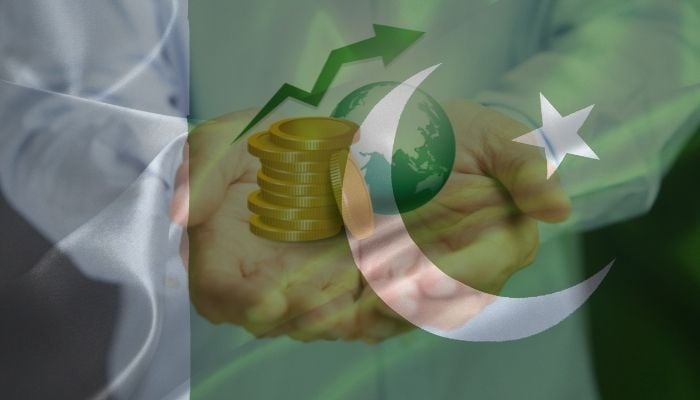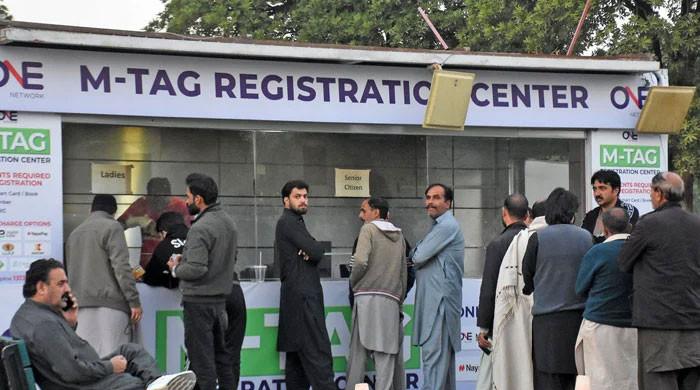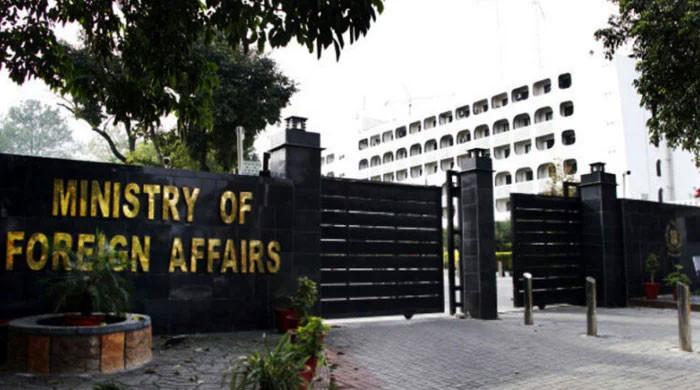Pakistan heading towards record $20 billion deficit
Dr Hafeez Pasha says more pressure expected on deficit with possibility of touching a historic high due to skyrocketing international price trends
February 28, 2022

ISLAMABAD: All estimates for reducing the growing current account deficit have been thwarted by rising international prices and Pakistan is now on course to reach a new historical high of $20 billion in deficit.
In the backdrop of Russia's lingering war with Ukraine, rising POL and commodity prices on international markets have exacerbated the concerns of Pakistan's economic managers.
When the Pakistan Tehreek-e-Insaaf (PTI) assumed power following the recent general elections, it consistently referred to the economy as ruined, claiming that the current account deficit had exceeded the $19 billion level in 2017-18.
Pakistan’s former finance minister and renowned economist Dr. Hafeez A. Pasha disclosed to The News that the current account deficit was heading towards a historic record by touching the $20 billion mark, or 6% of Gross Domestic Product (GDP) for the current fiscal year. He said that international prices were witnessing skyrocketing trends, and now the CAD would witness more pressure with the possibility of touching a historic high. He said that the CAD had already touched the $11.6 billion mark in the first seven months of the current fiscal year and now it was projected that it might go up to unprecedented levels of $20 billion versus $19 billion in the fiscal year 2017-18.
He said that the time had come to take steps to curtail imports without wasting time. For God's sake, the political parties must shun their differences because the country is heading towards a serious financial crisis. Dr Pasha appealed to the Treasury and Opposition benches, saying that the country's foreign currency reserves would begin to deplete at breakneck speed and could exceed the $7 billion mark, as seen in 2017-18 when the CAD reached $19 billion.
He also highlighted that the increasing gap between the Pakistan Bureau of Statistics (PBS) and FBR’s PRAL data on imports showed that the price surge might be playing a role in making payments on the pretext of fear that the prices might further escalate. The official data shows that the CAD widened to $11.6 billion in the first seven months of the current fiscal year, against a surplus of $1.028 billion in the same period of the last financial year of 2021. The current account deficit witnessed a record level of $2.6 billion in January 2022, which was the highest ever since 2008.
The official sources said that it was an official projection that imports would start witnessing declining trends from January 2022 because the uncertainty on the economic front would disappear after the announcement and approval of the mini-budget. The SBP officials also argued that they took measures to avoid the eruption of any crisis on external accounts and that things would be normalised in the second half of the current fiscal year. They had even raised questions about what would have happened if the government and the SBP had not taken policy actions.
On the one hand, the current account deficit was rising sharply, and on the other hand, the IMF projected that the country’s external debt servicing requirements would be touching $18.5 billion for the current fiscal year, compared to $11.9 billion in the last fiscal year. It is relevant to mention here that official repayments of both principal and markup were projected at $12.8 billion for the current fiscal year. The external debt repayment would stand at $17.8 billion, in line with the projections made by the IMF for the next financial year 2022–23.
When contacted, Dr. Ashfaque Hasan Khan, former Economic Adviser to the Ministry of Finance and Dean of NUST, on Sunday said that he was asking the government and SBP to pursue a selective but aggressive policy for import compression for the last four years. He criticised the prescriptions suggested by the IMF and stated that the policy of hiking the discount rate and depreciating the exchange rate had failed to yield the desired results. He said that there was a need to slap a ban on certain luxury and fast-moving goods as the WTO also allowed a ban on those items for a certain period if any country was facing a balance of payment crisis. He said that a complete ban should be placed on the import of luxury vehicles, cheese, chocolates, butter, and such other items.
Dr. Khaqan Najeeb, former Director-General of the Economic Reform Unit (ERU) at the Ministry of Finance, said that the current account deficit, at $11.5 billion in 7MFY22, has grown uncomfortably past forecasts for FY22. January saw the highest ever CAD of $2.6 billion. Based on current trends, it is likely to be more than $16 billion in FY22, or more than 5% of GDP.Certainly, it is an unsustainable level for Pakistan's economy. He emphasised that CAD remains a key cause of macro instability for a country like Pakistan with scarce foreign exchange. Pakistan's remittances are a key source of financing the large CAD.
It is worth noting that they fell by $376 million, or 15%, month on month, to $2.1 billion in January-22.Total exports have also fallen by 17% year on year.In contrast, CAD has risen as a result of a 45 percent year-on-year increase in imports on January 22.It will be hard for imports to keep up with rising oil prices, as evidenced by the price of oil hitting $100 a barrel and a rise in wheat prices.He felt corrective measures needed to be reviewed considering the geo-political realities. However, in the long run, removing structural weaknesses to substantially enhance the country's exports from a meagre 10% of GDP is required. We must also keep in mind that data over the last 10 years shows that in Pakistan, there is a large income elasticity of demand for imports, leading to a big increase in the trade deficit and, consequently, the current account.
Dr Khaqan concluded that had CAD been around the initial estimates made by the authorities, the country's foreign financing needs would be around $21 billion. They have now ballooned to well above $30 billion for FY22. Whereas exogenous variables like commodity prices have impacted CAD, in Pakistan's case, the expansionary budget FY22, strong stimulus in the form of concessional financing schemes, and long-term amnesty in the real estate sector have all contributed. It may be useful to strengthen macro-forecasting so that policy actions for stimulating the economy could have been more moderate to begin with.
Umair Naseer, economic analyst at Topline Research, stated that after the higher-than-anticipated January current account deficit, the estimate has been revised up to $17–19 bn CAD for the current fiscal year. The uptick in CAD in Jan 2022 was led by a 9pc MoM increase in the trade deficit, which increased to US $3.9 bn. Imports in January 2022 totaled US $6.4 billion, a 6% increase over the PBS-reported import total of US $6 billion.
PBS imports were 7 percent higher than SBP imports over the last two years on average, but that trend reversed this month due to a time lag in recognising certain imports.To recall, the PBS reported imports of US$7.6 bn and US$7.9 bn in November and December 2021, which were 15–19% higher than the SBP numbers. There is a likelihood that we may continue to see higher SBP import numbers in February 2022.
The outlook on oil prices would remain a key factor for Pakistan's external account situation as oil currently contributes around 18pc of the total import bill. With every US$10/bbl increase in international oil prices, Pakistan’s import bill increases by $1.5-2 bn. The global LNG supply shortage and the default of LNG cargoes by long-term suppliers have also been exerting pressure on our oil import bill.
Not only has Pakistan made spot RLNG purchases at expensive rates, but its crude and petroleum products imports in volumetric terms have also increased due to the lower availability of LNG in FY22. This is likely to be much higher than the SBP's projected current account deficit of 4pc of GDP on the old base (2005-06), to the tune of US $13bn. Given the recent set of data and outlook, we believe this will be revised upwards soon by the SBP, he concluded.
Originally published in The News









